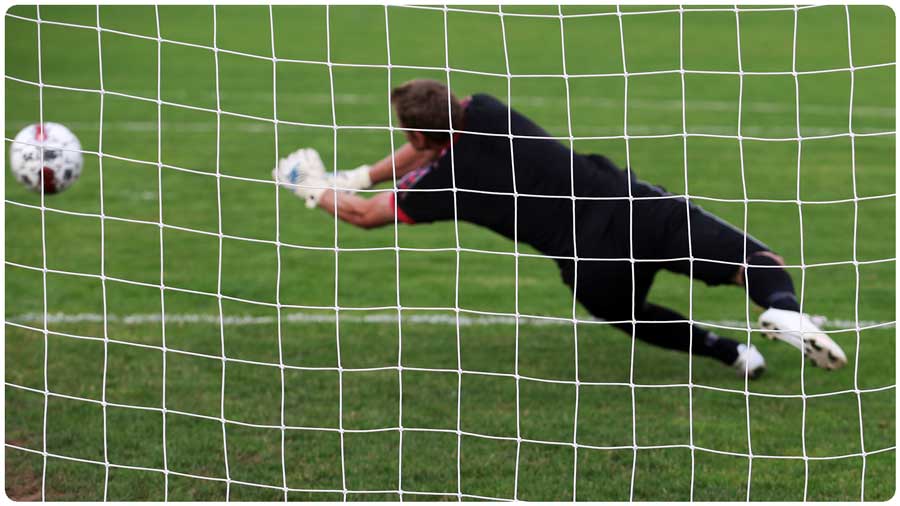Soccer goalkeepers require a different set of skills than any other player on their team, and because of this they spend a lot of time training apart from their teammates. To make the most of that time, it's important that coaches create drills specifically for goalies.
One of the most important goalkeeping attributes is fast reflexes. When strikers are firing shots from close range through a packed penalty area, the keeper needs to be on their toes and react quickly, particularly if the shot is deflected.
There are some training methods that can be used to help improve a goalkeeper's reflexes. It is best to have the goalkeepers working in pairs and training each other, allowing outfield players and coaches to concentrate on other training.
Turn and Stop Drill
This drill will help to develop recognition and reaction time. The drill begins with the goalkeeper standing facing the goal. The training partner will take shots, signaling just before striking the ball. The goalkeeper must then react quickly to turn around and try to save the shot.
Turn and Cover Drill
A variation on the previous drill, this one also begins with the goalkeeper facing the goal. The training partner will throw a ball at the goalkeeper's back, and the goalkeeper must turn and cover the ball with their body as quickly as possible. In a real match, the opposing striker would be looking to pounce on the loose ball, so the goalkeeper has only a split second to react.
Double Strike Drill
Use this drill, which requires the goalkeeper to save two balls at the same time, to improve reflexes. The training partner will line up one ball a few meters in front of the goalkeeper and will take a low shot with a second ball, aiming for the ball which is near the goalkeeper. If the training partner hits the ball correctly, then the goalkeeper will need to try whichever ball is on target - or both. This drill attempts to recreate a situation in a game where a striker shoots with several players in the way who may deflect the ball. The goalkeeper cannot usually predict where the balls will end up, and must rely on reflexes.
Drop Catches Drill
Here’s another popular drill to develop reflexes. Have the goalkeeper and training partner stand facing each other so that they can just reach other with outstretched arms. Have the training partner hold a soccer ball in each hand with his hands raised above his head. The training partner will then drop one of the balls while the keeper tries to catch it before it hits the ground. Increase the difficulty by increasing the distance between the players or by adding a second training partner and another two soccer balls.
Pick One Drill
Some goalkeepers will attempt to predict where the shot will end up, and rather than using their reflexes they will dive before the shot is struck. While this tactic can be effective in some cases, it is better to see where the ball is going and react quickly rather than guessing and potentially diving the wrong way. A drill to counter this involves places two balls in the penalty area, close together. The goalkeeper's training partner must then try to trick the keeper by faking a shot and then shooting with the other ball.
Follow The Bouncing Ball Drill
Once the goalkeeper has mastered these exercises, a goalkeeper training ball can be used to increase the difficulty and put their reflexes to the test. Different types of training ball are available to help goalkeepers improve their reflexes and are usually in an unusual shape - such as a pyramid - to ensure they are unpredictable when bouncing, in much the same way as a Rugby ball.


